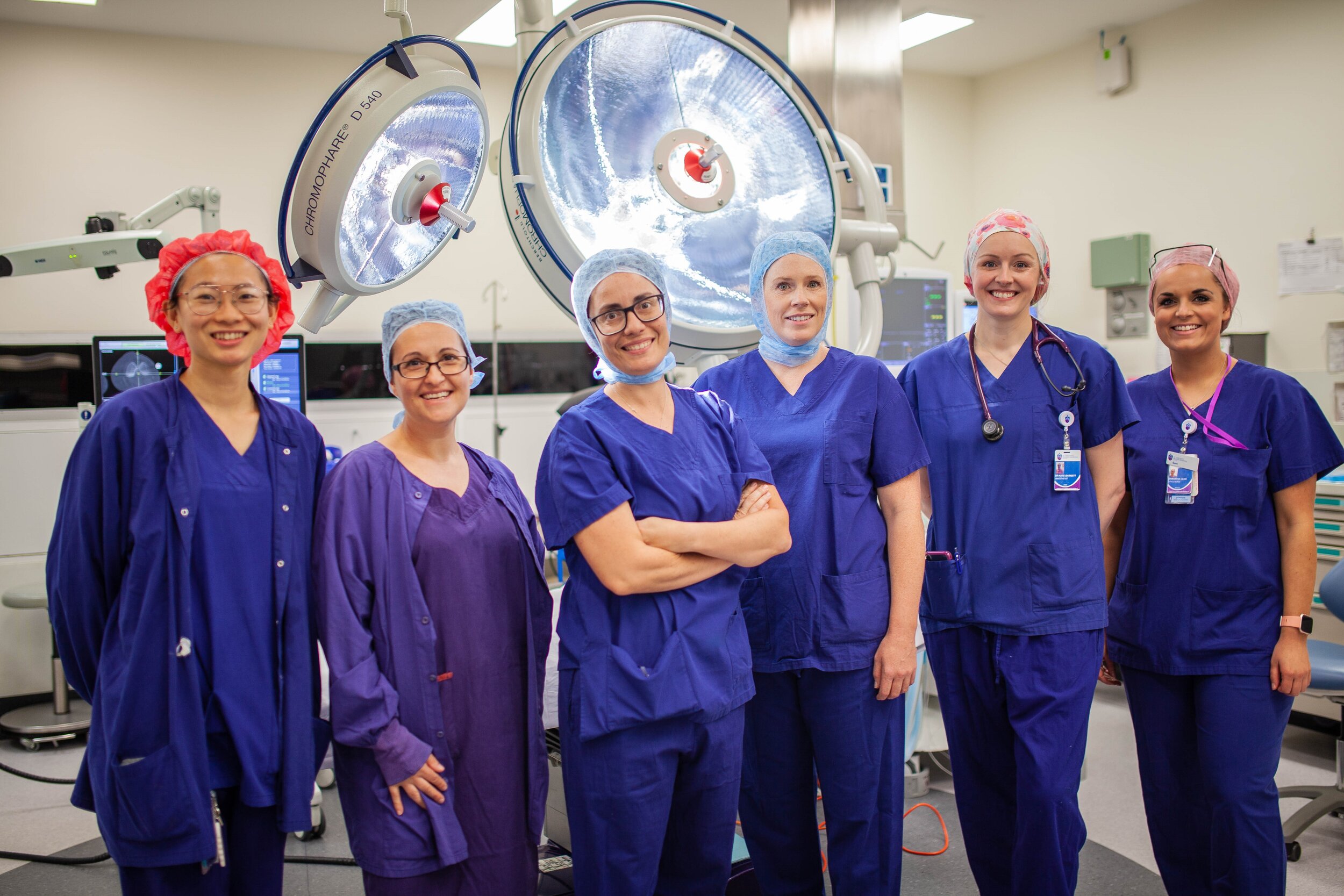All-women Team Perform Implant Surgery
A/Prof Claudia Di Bella and her all-women team, St Vincent’s Private Hospital, Melbourne, Australia
OSSIS technology contributes to bridging the gender gap.
OSSIS is already breaking barriers in the world of orthopedic surgery, with custom-made prosthetics that are rapid, robust, and gathering excellent feedback from surgeons. It’s also breaking the glass ceiling of gender imbalance in the medical profession.
In February 2020, an all-women team performed a surgery on a patient suffering from chondrosarcoma in the pelvis. From the design of the implant to the surgery itself, this was a woman-led operation: surgeon Associate Professor Claudia Di Bella performed the surgery; OSSIS Head of Technical Design and Engineering, Bethany Oates, designed the implant; and OSSIS Business Manager Natalie Bennell, communicated with the surgeon pre-operatively and attended the surgery.
In the male-dominated fields of orthopedic surgery and medical engineering, technological innovation is helping correct the gender imbalance.
Orthopedic Surgeon, Claudia Di Bella.
Melbourne-based orthopedic surgeon Associate Professor Claudia Di Bella specialises in orthopedic oncology. Women comprise about 4% of orthopedic surgeons in Australia and New Zealand, and A/Prof Di Bella is the only woman specialising in orthopedic oncology.
It’s a responsibility and a privilege that A/Prof Di Bella takes seriously. Through her teaching at the University of Melbourne, she emphasises gender is no barrier in this profession. If students want to raise a family while pursuing a career in orthopedic surgery, she encourages it, and sees the profession changing for the better with the times.
A/Prof Di Bella also considers orthopedics a specialisation anyone can get into. Orthopedics has a reputation as a profession requiring brute strength; this is a reason why it’s such a male-dominated specialisation. But A/Prof Di Bella emphasises technological developments around robotics and navigation have changed the practice, for the benefit of surgeons and patients:
“It doesn’t matter how big you are, how strong you are. For me, orthopedics is not just the technical drilling, sawing, putting things together. You’re actually treating a person. Patients’ feedback to me is that I talk to them, I listen to them. Yes, I’m a surgeon, but I’m not just a technician doing practical things. I’m actually treating someone, to make someone feel better. It’s about patient relationships.”
The surgery led by the all-women team was Di Bella’s first experience working with OSSIS, and she’s excited to work with them again at the next opportunity. After a glowing testimonial from a colleague in Australia, she knew that an OSSIS orthopedic implant was the best option for her patient. It was their only chance to avoid a high amputation and a serious loss of mobility.
A/Prof Di Bella knew the implant would work, but she was surprised by just how well it worked. She likens it to the right piece of a puzzle clicking into place.
“The right piece of a puzzle clicking into place.”
Engineer, Bethany Oates.
A/Prof Di Bella isn’t alone in forging a path for women in orthopedics. Head of Technical Design and Engineering at OSSIS, Bethany Oates was the first female engineer the company employed. She completed the design for A/Prof Di Bella’s chondrosarcoma patient.
Bethany performs mechanical calculations for OSSIS implants to ensure they are strong enough for the patient. She reviews every design before it is sent out, and checks for structural integrity.
“When Bethany graduated, she was the only female doing a Master’s in Engineering, out of a class of 150. Now, she has seen that around 30% of engineering students are female.”
Bethany equates orthopedics with carpentry: it’s like carpentry of the bones. And just as there are more male carpenters, there are more male orthopedic surgeons. But this is changing, partly thanks to developments in technology. As orthopedic surgery becomes less physical, as the tools become more mechanical and less physical strength is required to use them, more women are entering the field.
OSSIS Business Manager, Natalie Bennell.
Bringing everything together was Natalie Bennell, OSSIS Business Manager. Her key role in the company is to be the main point of contact for surgeons in Australia, building a relationship with them so they understand OSSIS processes.
It’s important for surgeons and engineers to understand each other's ideas and expectations. Natalie coordinated with A/Prof Di Bella in the lead-up to the surgery, communicating the design plans and organising the instrumentation in the surgery. She also attended the surgery.
A/Prof Di Bella was very impressed by the collaborative nature of working alongside Natalie, Bethany, and the rest of the OSSIS team. She praised their high-touch communication and willingness to find solutions to very complex problems.
Performing surgery is ultimately about the patient, and a team of people working together to help an individual. This all-women team of medical professionals and engineers achieved that at the highest level: a few months after the surgery, the patient has made a full recovery, and is walking without a limp.



